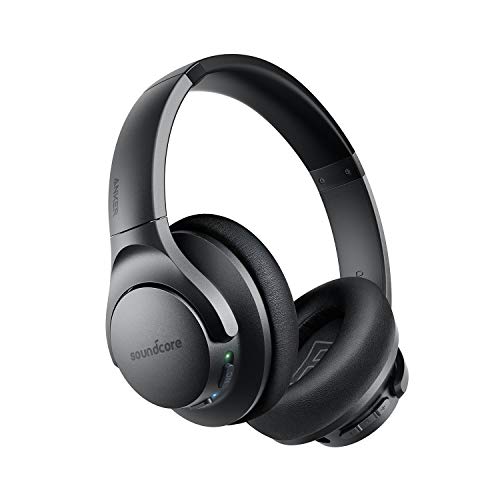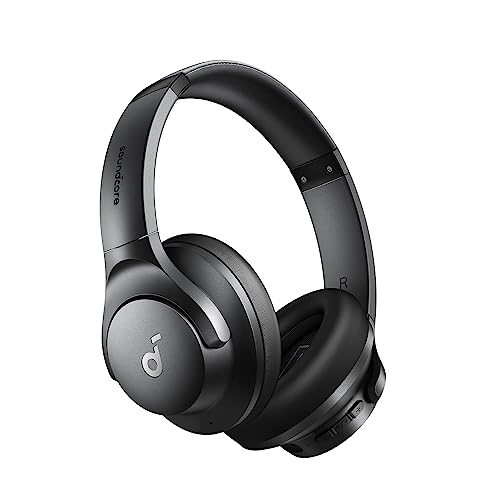Headphones noise cancelling headphones wireless cancelling wireless headphones, Get the facts, Cancelling – How Do They Work?
Active noise cancelling headphones utilize electronics to monitor ambient sounds and Noise Cancelling Wireless Headphones alter their structure, resulting in waves that block out peaks that are distracting. The constant sounds like the sound of airplane engines or train engines disappear while irregular sounds with various bandwidths are muffled.
You can take a call in a noisy restaurant without worrying about coworkers being able to hear you.
 1. Sound Quality
1. Sound Quality
It does not matter if they’re noise cancelling or not, the sound quality is still vital. In general, the higher priced headphones will have higher quality sound, however this isn’t always the case.
Active noise cancelling headphones (ANC) are the most popular headphones that block out ambient noise. This technology utilizes built-in microphones that continuously listen to the surrounding environment around you, and later creates an opposite of the outside noise. This is sent through your speakers along with your music and blocks out any background noise, so you only hear the music.
ANC can suppress low-frequency sounds such as the rumble from plane engines and train tracks. However it isn’t able to remove all background noise. These are because high-frequency tones have shorter wavelengths than low-frequency sounds, and so can’t be cancelled as easily. Nonetheless, a good pair of ANC headphones can significantly reduce ambient noise that can be distracting and leave you in the feeling of silence that’s perfect for listening to podcasts or music.
 Some headphones also include transparent mode that lets in some of the world around you to let you see what’s happening around you and have conversations without taking off the headphones. Some models are multi-device compatible that allows you to listen to music on your smartphone and also make calls using your tablet.
Some headphones also include transparent mode that lets in some of the world around you to let you see what’s happening around you and have conversations without taking off the headphones. Some models are multi-device compatible that allows you to listen to music on your smartphone and also make calls using your tablet.
If you’re looking for a headphone that is more passively isolated, take a look at our selection of headphones that are noise-isolating. These headphones block out the majority of noises by sealing your ears in. They don’t need any battery-powered electronic components to function.
A few of our in-ear headphones feature smart technology, which learns the places you go to and automatically switches to a noise cancelling mode to protect your hearing. They are popular with commuters in planes and trains, and can be used at home to reduce the noise of your neighbor’s lawnmowers. Sony Headphones Connect allows you to create individual noise-cancelling profile for different environments.
2. Noise Reduction
Noise cancelling headphones reduce the volume of ambient sound you hear, allowing you focus on your music or phone calls. They use built-in microphones to listen to the sounds around you and then create an inverse of those waves which are then played back into your ears, reducing them. You’ll have your own private island, except for the music you choose to listen to via your headphones.
The ability of a headphone to cut down on external sound is often referred to as decibels. However, the decibels number does not tell the complete story. The truth is, the amount of ANC that headphones claim to offer is contingent on how well-made the headphones are and even two models that claim to offer the same level of ANC may perform differently.
High-end headphones with active noise cancellation typically feature a lot of electronics which can drain the battery quickly. That’s why a few extra batteries are always a good idea for any headphone that uses this technology.
The quality of ANC in headphones is demonstrated by their ability to block low-frequency sounds such as trains, airplane engines or animated conversations between your seatmates (which are only blocked out with passive isolation). There are more advanced methods of using ANC, and these are incorporated into some of the top headphones.
One example is Bose’s active noise cancellation that uses digital audio processing to adapt to your surroundings. Its new Aware Mode is a more advanced version of this, and will adjust the ANC to the noise around you automatically.
The most effective earbuds for commuting or travelling are the ones which block out background noise and allow you to hear important things like your alarm clock, phone calls, and notifications from apps on your phone. These earbuds also come with the best ANC which means you can focus on your work and unwind in noisy surroundings with calming music without stressing your ears. You can also use the EQ settings on your headphones to adjust how much of the outside world you wish to be able to hear.
3. Comfort
Noise cancelling headphones can be made in many ways, but the best ones will create a sonic barrier between your ears and external noise. They block out background noises, which allows you to listen to your favorite music without interruption. This is far better than cranking up the volume of your regular headphones which can cause damage to your ears.
There are two types of headphones that reduce noise that are active and passive. Passive noise reducing headphones isolation makes use of physical fit to block out ambient noises before they reach the ears. This requires earpads that fit snugly over the ear canal openings and the headband doesn’t move when you move. The average headphone that is passive is designed to last up to 30 hours.
Active noise cancellation, or ANC headphones utilize electronics inside to hear ambient sounds and produce noise reduction. They accomplish this by creating an equal sound wave magnitude that is 180 degrees out of phase with the sound you’re hearing. These waves cancel each other out, resulting in a peaceful, quiet space apart from the music you are listening to. The technology behind ANC, however, is not perfect. It has trouble with high-pitched sounds like the hum from an airplane engine, and sound that fluctuates, like a the whooshing of tires on the road.
If you’re planning to use headphones that have ANC on trains or on a plane, it’s best to check with the rail or airline company first. Some have specific requirements for headphones that can be used onboard and train, such as ensuring that they don’t interfere with other passengers and noise Cancelling wireless headphones offer complete access to entertainment systems.
If you’re headed to the gym, you’ll need a comfortable pair of noise isolation headphones that can keep up with your workout and help you get excited. Bluetooth headphones with wireless connectivity are the ideal choice. They should also come with features like the ability to make calls or listen to podcasts, as well as play music. Some headphones come with voice assistants to answer questions regarding the weather or your exercise schedule and others come with the ability to focus quickly, which allows you to place your hand over one ear cup and play music.
4. Noise Cancellation
The best headphones with noise cancelling can block out ambient sounds that can interfere with your audio entertainment regardless of whether it’s an aircraft engine or car tire roaring on the highway, or your seatmate’s animated chatter on the train. Noise-canceling headphones work by using microphones to capture and analyze the sound waves that come from the outside world. The headphones then transmit a signal to your ear that is the opposite of unwanted noise. That cancels out the two sounds, allowing you to enjoy your music or podcasts.
This is referred to as active noise cancellation (ANC) and it operates by using tiny microphones which are incorporated inside the earcups of your earbuds or headphones. The information is then fed to an onboard electronic processor that translates the sound waves into an anti-sound wave that’s created by emitting two identical signals: one that’s a peak when it hits your ear, and another that’s a valley. The valleys and peaks cancel each other and you’re only hearing your music or other audio.
Some headsets use digital ANC and others use an passive and active noise isolation to provide the most effective results. The higher quality the headphones are, the more efficient their ANC will be.
While headphones with noise cancelling capabilities can drastically reduce ambient sounds however, they’re not perfect. They’re particularly useful in the face of continuous sounds like jet engines, trains and traffic. However, they may not be in a position to block out high-frequency sounds from your coworkers in the breakroom or your seatmate laughing on the plane.
You should also be aware of the volume you listen to music and other audio. Both the U.S. Environmental Protection Agency (EPA) and the World Health Organization (WHO) recommend that you keep your audio or music at 70 decibels, or lower, to prevent hearing loss. The majority of manufacturers are now producing headphones that are suitable for listening to any kind of music. Find headphones that have features such as noise cancellation as well as audio quality and other features. You’ll also want to examine how the headphones fit your neck and ears as it affects how comfortable they are and how effectively they block your ear from other sounds.
